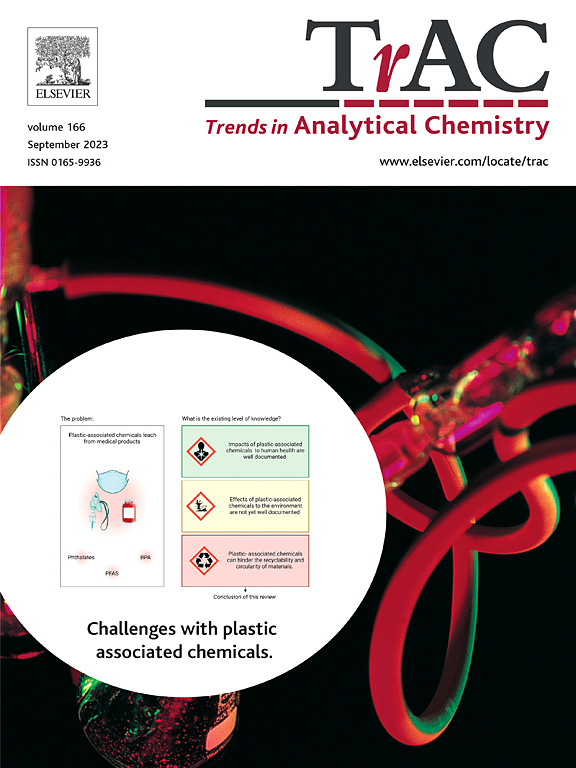Advances in fluorescent sensors for trace detection of metal contaminants and agrochemical residues in soil: A comprehensive review
IF 12
1区 化学
Q1 CHEMISTRY, ANALYTICAL
引用次数: 0
Abstract
Background
Soil contamination by hazardous substances, including heavy metal ions and agrochemical residues such as herbicides, insecticides and fungicides poses a significant threat to environmental safety and human health. Reliable detection methods for trace levels of these contaminants are essential to address the risks associated with their presence in soil.
Scope and approach
This review highlights recent advancements in the development of fluorescent sensors for the trace detection of contaminants in soil samples. The discussion encompasses the properties of various fluorescent materials, their selectivity, limit of detection, sensing strategies and mechanisms.
Key findings and conclusions
Fluorescent sensors have demonstrated exceptional potential for detecting soil contaminants due to their high sensitivity, specificity, and rapid response. Advances in sensor design, including the development of novel materials and portable detection systems, have significantly improved detection capabilities. Future research should focus on enhancing the reliability of fluorescent signals, developing reusable, portable and user-friendly systems, and improving the applicability of these sensors to real soil analysis.

荧光传感器在土壤中痕量金属污染物和农药残留检测中的研究进展
有害物质,包括重金属离子和除草剂、杀虫剂和杀菌剂等农用化学品残留物对土壤的污染对环境安全和人类健康构成重大威胁。这些污染物痕量水平的可靠检测方法对于解决其在土壤中存在的相关风险至关重要。本文综述了荧光传感器在土壤样品中痕量污染物检测方面的最新进展。讨论了各种荧光材料的性质,它们的选择性,检测极限,传感策略和机制。荧光传感器由于其高灵敏度、特异性和快速反应,在检测土壤污染物方面表现出了非凡的潜力。传感器设计的进步,包括新材料和便携式检测系统的发展,大大提高了检测能力。未来的研究应着重于提高荧光信号的可靠性,开发可重复使用、便携和用户友好的系统,并提高这些传感器在实际土壤分析中的适用性。
本文章由计算机程序翻译,如有差异,请以英文原文为准。
求助全文
约1分钟内获得全文
求助全文
来源期刊

Trends in Analytical Chemistry
化学-分析化学
CiteScore
20.00
自引率
4.60%
发文量
257
审稿时长
3.4 months
期刊介绍:
TrAC publishes succinct and critical overviews of recent advancements in analytical chemistry, designed to assist analytical chemists and other users of analytical techniques. These reviews offer excellent, up-to-date, and timely coverage of various topics within analytical chemistry. Encompassing areas such as analytical instrumentation, biomedical analysis, biomolecular analysis, biosensors, chemical analysis, chemometrics, clinical chemistry, drug discovery, environmental analysis and monitoring, food analysis, forensic science, laboratory automation, materials science, metabolomics, pesticide-residue analysis, pharmaceutical analysis, proteomics, surface science, and water analysis and monitoring, these critical reviews provide comprehensive insights for practitioners in the field.
 求助内容:
求助内容: 应助结果提醒方式:
应助结果提醒方式:


